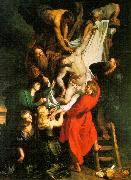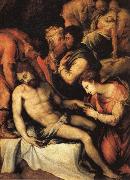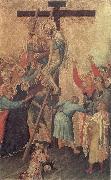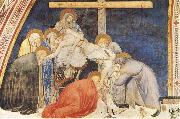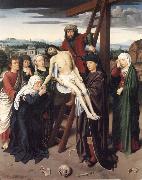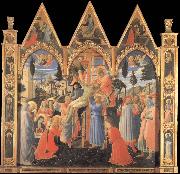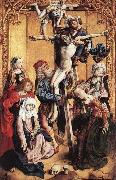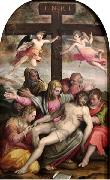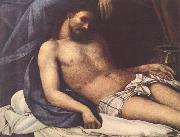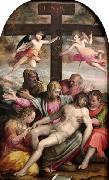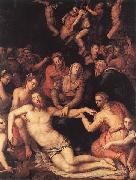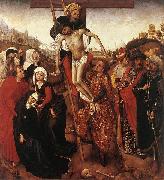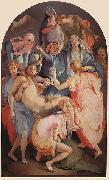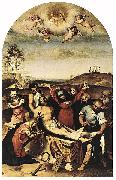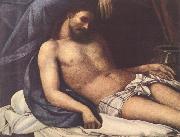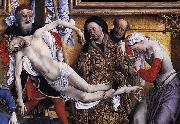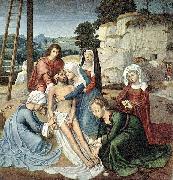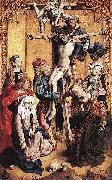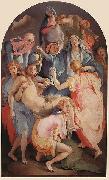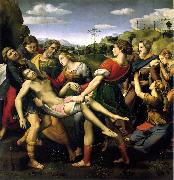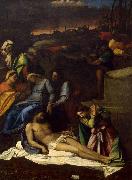Wholesale Oil Painting No Minimum |
|||||||||||
|
|
|||||||||||

|
|||||||||||
|
|
|
||||||||
Peter Paul RubensFlemish Baroque Era Painter, 1577-1640 Peter Paul Rubens (June 28, 1577 ?C May 30, 1640) was a prolific seventeenth-century Flemish Baroque painter, and a proponent of an exuberant Baroque style that emphasized movement, color, and sensuality. He is well-known for his Counter-Reformation altarpieces, portraits, landscapes, and history paintings of mythological and allegorical subjects. In addition to running a large studio in Antwerp which produced paintings popular with nobility and art collectors throughout Europe, Rubens was a classically-educated humanist scholar, art collector, and diplomat who was knighted by both Philip IV, king of Spain, and Charles I, king of England. Rubens was a prolific artist. His commissioned works were mostly religious subjects, "history" paintings, which included mythological subjects, and hunt scenes. He painted portraits, especially of friends, and self-portraits, and in later life painted several landscapes. Rubens designed tapestries and prints, as well as his own house. He also oversaw the ephemeral decorations of the Joyous Entry into Antwerp by the Cardinal-Infante Ferdinand in 1635. His drawings are mostly extremely forceful but not detailed; he also made great use of oil sketches as preparatory studies. He was one of the last major artists to make consistent use of wooden panels as a support medium, even for very large works, but he used canvas as well, especially when the work needed to be sent a long distance. For altarpieces he sometimes painted on slate to reduce reflection problems. His fondness of painting full-figured women gave rise to the terms 'Rubensian' or 'Rubenesque' for plus-sized women. The term 'Rubensiaans' is also commonly used in Dutch to denote such women. |
||||||||
|
|
||||||||
The Deposition
The Deposition Painting ID:: 3643 |
1612
Antwerp Cathedral 1612 Antwerp Cathedral |
|||||||
|
|
||||||||
Francesco SalviatiItalian 1510-1563 Francesco Salviati Gallery |
||||||||
|
|
||||||||
|
|
The Deposition
The Deposition Painting ID:: 29864 |
mk67
Oil on panel
30 5/16x207/8in
mk67 Oil on panel 30 5/16x207/8in |
||||||
|
|
||||||||
Gerard Davidb.c. 1460, Oudewater, Neth. d.Aug. 13, 1523, Bruges Flemish Gerard David Locations Netherlandish painter. He is known as the last of the Flemish Primitives. Although born in the northern Netherlands, he moved to Bruges as a young man, and most of his work expresses the impassive, unmannered, microscopically realistic approach peculiar to south Netherlandish art in the time of Jan van Eyck. David was skilled at synthesizing the art of several important south Netherlandish predecessors, adapting, for instance, the compositions of van Eyck and the technique of Hugo van der Goes. He was also influenced by Hans Memling, whose example led him to refine and polish his cruder northern Netherlandish style and to adopt the popular theme of the Virgin and Child enthroned. |
||||||||
|
|
||||||||
|
|
The deposition
The deposition Painting ID:: 31733 |
mk76
Painted between c.1510 and 1515
Oil on canves
56 1/8x44 1/4in
mk76 Painted between c.1510 and 1515 Oil on canves 56 1/8x44 1/4in |
||||||
|
|
||||||||
Simone Martini1283-1344 Italian Simone Martini Locations He was a major figure in the development of early Italian painting and greatly influenced the development of the International Gothic style. It is thought that Martini was a pupil of Duccio di Buoninsegna, the leading Sienese painter of his time. His brother-in-law was the artist Lippo Memmi. Very little documentation survives regarding Simone's life, and many attributions are debated by art historians. Simone Martini died while in the service of the Papal court at Avignon in 1344. Simone was doubtlessly apprenticed from an early age, as would have been the normal practice. Among his first documented works is the Maest?? of 1315 in the Palazzo Pubblico in Siena. A copy of the work, executed shortly thereafter by Lippo Memmi in San Gimignano, testifies to the enduring influence Simone's prototypes would have on other artists throughout the fourteenth century. Perpetuating the Sienese tradition, Simone's style contrasted with the sobriety and monumentality of Florentine art, and is noted for its soft, stylized, decorative features, sinuosity of line, and unsurpassed courtly elegance. Simone's art owes much to French manuscript illumination and ivory carving: examples of such art were brought to Siena in the fourteenth century by means of the Via Francigena, a main pilgrimage and trade route from Northern Europe to Rome. Simone's major works include the Maest?? (1315) in the Palazzo Pubblico in Siena, St Louis of Toulouse Crowning the King at the Museo di Capodimonte in Naples (1317), the S. Caterina Polyptych in Pisa (1319) and the Annunciation and two Saints at the Uffizi in Florence (1333), as well as frescoes in the Chapel of St. Martin in the lower church of the Basilica of San Francesco d'Assisi. Francis Petrarch became friend with Simone while in Avignon, and two of his sonnets make reference to a portrait of Laura de Noves he supposedly painted for the poet. |
||||||||
|
|
||||||||
|
|
The Deposition
The Deposition Painting ID:: 33320 |
mk86
Tempera on wood
29.7x20.5cm
mk86 Tempera on wood 29.7x20.5cm |
||||||
|
|
||||||||
Pietro LorenzettiItalian Byzantine Style Painter, ca.1280-1348 |
||||||||
|
|
||||||||
|
|
The Deposition
The Deposition Painting ID:: 33322 |
mk86
c.1320-1330
Fresco
232x377cm
Assis,San Francesco.
Lower Church
mk86 c.1320-1330 Fresco 232x377cm Assis,San Francesco. Lower Church |
||||||
|
|
||||||||
Gerard Davidb.c. 1460, Oudewater, Neth. d.Aug. 13, 1523, Bruges Flemish Gerard David Locations Netherlandish painter. He is known as the last of the Flemish Primitives. Although born in the northern Netherlands, he moved to Bruges as a young man, and most of his work expresses the impassive, unmannered, microscopically realistic approach peculiar to south Netherlandish art in the time of Jan van Eyck. David was skilled at synthesizing the art of several important south Netherlandish predecessors, adapting, for instance, the compositions of van Eyck and the technique of Hugo van der Goes. He was also influenced by Hans Memling, whose example led him to refine and polish his cruder northern Netherlandish style and to adopt the popular theme of the Virgin and Child enthroned. |
||||||||
|
|
||||||||
|
|
The Deposition
The Deposition Painting ID:: 38176 |
mk29
1510-15
Oil on canvas
142.5x112.4cm
mk29 1510-15 Oil on canvas 142.5x112.4cm |
||||||
|
|
||||||||
Fra AngelicoFra Angelico Galleries b.c. 1400, Vicchio, Florence d.Feb. 18, 1455, Rome Fra Angelico (c. 1395 ?C February 18, 1455), born Guido di Pietro, was an Early Italian Renaissance painter, referred to in Vasari's Lives of the Artists as having "a rare and perfect talent". Known in Italy as il Beato Angelico, he was known to his contemporaries as Fra Giovanni da Fiesole (Brother John from Fiesole). In Giorgio Vasari's Lives of the Artists, written prior to 1555, he was already known as Fra Giovanni Angelico (Brother Giovanni the Angelic One). Within his lifetime or shortly thereafter he was also called Il Beato (the Blessed), in reference to his skills in painting religious subjects. In 1982 Pope John Paul II conferred beatification, thereby making this title official. Fiesole is sometimes misinterpreted as being part of his formal name, but it was merely the name of the town where he took his vows, used by contemporaries to separate him from other Fra Giovannis. He is listed in the Roman Martyrology as Beatus Ioannes Faesulanus, cognomento Angelicus??"Blessed Giovanni of Fiesole, nicknamed Angelico". Fra Angelico was working at a time when the style of painting was in a state of change. This process of change had begun a hundred years previous with the works of Giotto and several of his contemporaries, notably Giusto de' Menabuoi, both of whom had created their major works in Padua, although Giotto was trained in Florence by the great Gothic artist, Cimabue, and painted a fresco cycle of St Francis in the Bardi Chapel in Santa Croce. Giotto had many enthusiastic followers, who imitated his style in fresco, some of them, notably the Lorenzetti, achieving great success. |
||||||||
|
|
||||||||
|
|
The Deposition
The Deposition Painting ID:: 40184 |
mk156
1437-1440
Tempera on panel
176x185cm
mk156 1437-1440 Tempera on panel 176x185cm |
||||||
|
|
||||||||
|
|
||||||||
|
|
The Deposition
The Deposition Painting ID:: 42951 |
mk170
1500-1505
Oil on oak
74.9x47.3cm
mk170 1500-1505 Oil on oak 74.9x47.3cm |
||||||
|
|
||||||||
MASTER of the St. Bartholomew AltarGerman painter active 1470-1510 in Cologne |
||||||||
|
|
||||||||
|
|
The Deposition
The Deposition Painting ID:: 43550 |
Oil on oak
75 x 47 cm Oil on oak 75 x 47 cm |
||||||
|
|
||||||||
|
|
||||||||
|
|
The Deposition
The Deposition Painting ID:: 79726 |
The Deposition" oil on Canvas.
cjr The Deposition" oil on Canvas. cjr |
||||||
|
|
||||||||
Prospero Fontana(1512 - 1597) was an Italian painter of the late Renaissance. Fontana was born in Bologna, and became a pupil of Innocenzo da Imola. He afterwards worked for Perin del Vaga in the Palazzo Doria in Genoa. Towards 1550, it is reported that Michelangelo introduced him to Pope Julius III as a portrait-painter; and he was pensioned at the pontifical court. He later joined Vasari's studio in Florence, and worked in frescoes at the Palazzo Vecchio (1563-65). He is an early representative of the Bolognese school of painting. Sabbatini, Sammachini and Passerotti were three of his principal pupils or colleagues. His daughter, Lavinia Fontana, was also a prominent painter of mostly conventional religious canvases. Returning to Bologna, after doing some work in Fontainebleau (France) and in Genoa, he opened a school of art, in which he became briefly the preceptor of Lodovico and Agostino Carracci. He has left a large quantity of work in Bologna. His altarpiece of the Adoration of the Magi, in the church of Santa Maria delle Grazie, being considered his masterpiece. It is not unlike the style of Paul Veronese. He died in Rome in 1597. |
||||||||
|
|
||||||||
|
|
The Deposition
The Deposition Painting ID:: 80775 |
Date 1563(1563)
Medium oil on poplar panel
cjr Date 1563(1563) Medium oil on poplar panel cjr |
||||||
|
|
||||||||
Sebastiano del Piombo1485-1547 Italian Sebastiano del Piombo Galleries Italian painter. He was one of the most important artists in Italy in the first half of the 16th century, active in Venice and Rome. His early, Venetian, paintings are reminiscent of Giovanni Bellini and to a lesser extent of Giorgione. With his move to Rome in 1511 he came under the influence of Raphael and then of Michelangelo, who supplied him with drawings. After the death of Raphael (1520) he was the leading painter working in Rome and was particularly noted as a portrait painter. In his finest works, such as the Piete (1513; Viterbo, Mus. Civ.) and the Flagellation (1516-24; Rome, S Pietro in Montorio), there is a remarkable fusion of the Venetian use of colour and the grand manner of central Italian classicism. |
||||||||
|
|
||||||||
|
|
The Deposition
The Deposition Painting ID:: 83981 |
Date 1516(1516)
Medium Oil on canvas transferred from wood
cjr Date 1516(1516) Medium Oil on canvas transferred from wood cjr |
||||||
|
|
||||||||
Prospero Fontana(1512 - 1597) was an Italian painter of the late Renaissance. Fontana was born in Bologna, and became a pupil of Innocenzo da Imola. He afterwards worked for Perin del Vaga in the Palazzo Doria in Genoa. Towards 1550, it is reported that Michelangelo introduced him to Pope Julius III as a portrait-painter; and he was pensioned at the pontifical court. He later joined Vasari's studio in Florence, and worked in frescoes at the Palazzo Vecchio (1563-65). He is an early representative of the Bolognese school of painting. Sabbatini, Sammachini and Passerotti were three of his principal pupils or colleagues. His daughter, Lavinia Fontana, was also a prominent painter of mostly conventional religious canvases. Returning to Bologna, after doing some work in Fontainebleau (France) and in Genoa, he opened a school of art, in which he became briefly the preceptor of Lodovico and Agostino Carracci. He has left a large quantity of work in Bologna. His altarpiece of the Adoration of the Magi, in the church of Santa Maria delle Grazie, being considered his masterpiece. It is not unlike the style of Paul Veronese. He died in Rome in 1597. |
||||||||
|
|
||||||||
|
|
The Deposition
The Deposition Painting ID:: 84962 |
1563(1563)
Medium English: oil on poplar panel
cyf 1563(1563) Medium English: oil on poplar panel cyf |
||||||
|
|
||||||||
Angelo Bronzino(November 17, 1503 - November 23, 1572), usually known as Il Bronzino, or Agnolo Bronzino (mistaken attempts also have been made in the past to assert his name was Agnolo Tori and even Angelo (Agnolo) Allori), was an Italian Mannerist painter from Florence. The origin of his nickname, Bronzino is unknown, but could derive from his dark complexion, or from that he gave many of his portrait subjects. Bronzino was born in Florence. According to his contemporary Vasari, Bronzino was a pupil first of Raffaellino del Garbo, and then of Pontormo. The latter was ultimately the primary influence on Bronzino's developing style and the young artist remained devoted to his eccentric teacher. |
||||||||
|
|
||||||||
|
|
The Deposition
The Deposition Painting ID:: 86595 |
Date 1565(1565)
Medium Oil on wood
Dimensions Height: 350 cm (137.8 in). Width: 235 cm (92.5 in).
cjr Date 1565(1565) Medium Oil on wood Dimensions Height: 350 cm (137.8 in). Width: 235 cm (92.5 in). cjr |
||||||
|
|
||||||||
|
|
||||||||
|
|
The Deposition
The Deposition Painting ID:: 86758 |
Date 1470s
Medium Oil on oak panel
Dimensions Height: 129 cm (50.8 in). Width: 95 cm (37.4 in).
cjr Date 1470s Medium Oil on oak panel Dimensions Height: 129 cm (50.8 in). Width: 95 cm (37.4 in). cjr |
||||||
|
|
||||||||
|
|
||||||||
|
|
The Deposition
The Deposition Painting ID:: 86778 |
Date c. 1460(1460)
Medium Oil on oak panel
Dimensions Height: 57 cm (22.4 in). Width: 52 cm (20.5 in).
cjr Date c. 1460(1460) Medium Oil on oak panel Dimensions Height: 57 cm (22.4 in). Width: 52 cm (20.5 in). cjr |
||||||
|
|
||||||||
Jacopo PontormoItalian 1494-1557 Jacopo Pontormo Galleries Italian painter and draughtsman. He was the leading painter in mid-16th-century Florence and one of the most original and extraordinary of Mannerist artists. His eccentric personality, solitary and slow working habits and capricious attitude towards his patrons are described by Vasari; his own diary, which covers the years 1554-6, further reveals a character with neurotic and secretive aspects. Pontormo enjoyed the protection of the Medici family throughout his career but, unlike Agnolo Bronzino and Giorgio Vasari, did not become court painter. His subjective portrait style did not lend itself to the state portrait. He produced few mythological works and after 1540 devoted himself almost exclusively to religious subjects. His drawings, mainly figure studies in red and black chalk, are among the highest expressions of the great Florentine tradition of draughtsmanship; close to 400 survive, forming arguably the most important body of drawings by a Mannerist painter. His highly personal style was much influenced by Michelangelo, though he also drew on northern art, primarily the prints of Albrecht Derer. |
||||||||
|
|
||||||||
|
|
The Deposition
The Deposition Painting ID:: 86917 |
Date c. 1528(1528)
Medium Oil on wood
Dimensions Height: 313 cm (123.2 in). Width: 192 cm (75.6 in).
cjr Date c. 1528(1528) Medium Oil on wood Dimensions Height: 313 cm (123.2 in). Width: 192 cm (75.6 in). cjr |
||||||
|
|
||||||||
Lorenzo LottoItalian 1480-1556 Lorenzo Lotto Galleries In this last period of his life, Lorenzo Lotto would frequently move from town to town, searching for patrons and commissions. In 1532 he went to Treviso. Next he spent about seven years in the Marches (Ancona, Macerata en Jesi), returning to Venice in 1540. He moved again to Treviso in 1542 and back to Venice in 1545. Finally he went back to Ancona in 1549. This was a productive period in his life, during which he painted several altarpieces and portraits : Santa Lucia before the Judge, 1532, Jesi, Pinacoteca comunale The Sleeping Child Jesus with the Madonna, St. Joseph and St. Catherine of Alexandria, 1533, Bergamo, Accademia Carrara Portrait of a Lady as Lucretia, 1533, National Gallery, London. Holy Family with SS Jerome, Anna and Joachim, 1534, Firenze, Uffizi Holy Family, ca 1537, Paris, Louvre Portrait of a Young Man, Firenze, Uffizi Crucifixion, Monte San Giusto, Church of S Maria in Telusiano Rosary Madonna, 1539, Cingoli, Church of San Nicolo Portrait of a Man, 1541, Ottawa, National Gallery of Canada Bust of a Bearded Man, 1541, ascribed, San Francisco, Fine Arts Museum The Alms of Saint Anthony, 1542, Venezia, church SS Giovanni e Paolo Madonna and four Saints, 1546, Venezia, Church of San Giacomo dell??Orio Portrait of fra?? Gregorio Belo da Vicenza, 1548,New York, Metropolitan Museum Assumption, 1550, Ancona, church San Francesco alle Scale The Crossbowman, 1551, Rome, Pinacoteca Capitolina Portrait of an Old man, ascribed, ca 1552, Saint Petersburg, Ermitage Presentation in the Temple, 1555, Loreto, Palazzo Apostolico A Venetian woman in the guise of Lucretia (1533).At the end of his life it was becoming increasingly difficult for him to earn a living. Furthermore, in 1550 one of his works had an unsuccessful auction in Ancona. As recorded in his personal account book, this deeply disillusioned him. As he had always been a deeply religious man, he entered in 1552 the Holy Sanctuary at Loreto, becoming a lay brother. During that time he decorated the basilica of S Maria and painted a Presentation in the Temple for the Palazzo Apostolico in Loreto. He died in 1556 and was buried, at his request, in a Dominican habit. Giorgio Vasari included Lotto's biography in the third volume of his book Vite. Lorenzo Lotto himself left many letters and a detailed notebook (Libro di spese diverse, 1538-1556), giving a certain insight in his life and work. Among the many painters he influenced are likely Giovanni Busi |
||||||||
|
|
||||||||
|
|
The Deposition
The Deposition Painting ID:: 86923 |
Date 1512(1512)
Medium Oil on wood
Dimensions Height: 298 cm (117.3 in). Width: 197 cm (77.6 in).
cjr Date 1512(1512) Medium Oil on wood Dimensions Height: 298 cm (117.3 in). Width: 197 cm (77.6 in). cjr |
||||||
|
|
||||||||
Sebastiano del Piombo1485-1547 Italian Sebastiano del Piombo Galleries Italian painter. He was one of the most important artists in Italy in the first half of the 16th century, active in Venice and Rome. His early, Venetian, paintings are reminiscent of Giovanni Bellini and to a lesser extent of Giorgione. With his move to Rome in 1511 he came under the influence of Raphael and then of Michelangelo, who supplied him with drawings. After the death of Raphael (1520) he was the leading painter working in Rome and was particularly noted as a portrait painter. In his finest works, such as the Piete (1513; Viterbo, Mus. Civ.) and the Flagellation (1516-24; Rome, S Pietro in Montorio), there is a remarkable fusion of the Venetian use of colour and the grand manner of central Italian classicism. |
||||||||
|
|
||||||||
|
|
The Deposition
The Deposition Painting ID:: 87833 |
1516(1516)
Medium Oil on canvas transferred from wood
cyf 1516(1516) Medium Oil on canvas transferred from wood cyf |
||||||
|
|
||||||||
Rogier van der WeydenRogier van der Weyden 1399/1400 - 1464 was the most important representative of Netherlandish painting or Northern Renaissance ... is, with Jan van Eyck, considered one of the greatest exponents of the school of Early Netherlandish painting. Rogier van der Weyden was born in Tournai as 'Rogier de le Pasture' (Roger of the Pasture) in 1399 or 1400. His parents were Henri de le Pasture and Agnes de Watr??los. The family had settled before in the city of Tournai where Rogiers father worked as a 'maître-coutelier' (knife manufacturer). In 1426 Rogier married Elisabeth, the daughter of the Brussels shoemaker Jan Goffaert and his wife Cathelyne van Stockem. Rogier and Elisabeth had four children: Cornelius, who became a Carthusian monk, was born in 1427, a daughter Margaretha in 1432. Before 21 October 1435 the family settled in Brussels where the two younger children were born: Pieter in 1437 and Jan the next year. From the second of March 1436 onwards held the title of 'painter to the town of Brussels' (stadsschilder) a very prestigious post because Brussels was at that time the most important residence of the splendid court of the Dukes of Burgundy. It was at the occasion of his move to the Dutch-speaking town of Brussels that Rogier began using the Dutch version of his name: 'Rogier van der Weyden'Little is known about Rogier's training as a painter. The archival sources from Tournai (completely destroyed during World War II, but luckily partly transcribed in the 19th and early 20th century) are somewhat confusing and have led to different interpretations by scholars. From a document it is known that the city council of Tournai offered wine in honour of a certain 'Maistre Rogier de le Pasture' on March the 17th 1427. However, on the 5th of March of the following year the records of the painters' guild show a certain 'Rogelet de le Pasture' entered the workshop of Robert Campin together with Jacques Daret. Only five years later, on the first of August 1432, Rogier de le Pasture obtains the title of 'Master' (Maistre) as a painter.[1] Many have doubted whether Campin's apprentice 'Rogelet' was the same as the master 'Rogier' that was offered the wine back in 1426. The fact that in 1426-1427 Rogier was a married man in his late twenties, and well over the normal age of apprenticeship has been used as an argument to consider 'Rogelet' as a younger painter with the same name. In the 1420's however the city of Tournai was in crisis and as a result the guilds were not functioning normally. The late apprenticeship of Rogier/Rogelet may have been a legal formality. Also Jacques Daret was then in his twenties and had been living and working in Campin's household for at least a decade. It is possible that Rogier obtained an academic title (Master) before he became a painter and that he was awarded the wine of honour on the occasion of his graduation. The sophisticated and 'learned' iconographical and compositional qualities of the paintings attributed to him are sometimes used as an argument in favour of this supposition. The social and intellectual status of Rogier in his later life surpassed that of a mere craftsman at that time. In general the close stylistical link between the documented works of Jacques Daret, and the paintings attributed to Robert Campin and Rogier van der Weyden is considered as the main argument to consider Rogier van der Weyden as a pupil of Robert Campin. The last mention of Rogier de la Pasture in the financial records of Tournai, on October 21, 1435, lists him as demeurrant ?? Brouxielles ('living in Brussels'). At the same time, the first mention of Rogier de Weyden is made as the official painter of Brussels. Therefore Rogier de la Pasture and Rogier Van der Weyden are thought to be one and the same painter. The post of city painter was created especially for Van der Weyden and was meant to lapse on his death. It was linked to a huge commission to paint four justice scenes for the 'Golden Chamber' of Brussels City Hall.[2] Different properties and investments are documented and witness his material prosperity. The portraits he painted of the Burgundian Dukes, their relatives and courtiers, demonstrate a close relationship with the elite of the Netherlands. The Miraflores Altarpiece was probably commissioned by King Juan II of Castile, since Juan II donated it to the monastery of Miraflores in 1445. |
||||||||
|
|
||||||||
|
|
The Deposition
The Deposition Painting ID:: 88079 |
c. 1435(1435)
Medium Oil on oak panel
cjr c. 1435(1435) Medium Oil on oak panel cjr |
||||||
|
|
||||||||
Gerard Davidb.c. 1460, Oudewater, Neth. d.Aug. 13, 1523, Bruges Flemish Gerard David Locations Netherlandish painter. He is known as the last of the Flemish Primitives. Although born in the northern Netherlands, he moved to Bruges as a young man, and most of his work expresses the impassive, unmannered, microscopically realistic approach peculiar to south Netherlandish art in the time of Jan van Eyck. David was skilled at synthesizing the art of several important south Netherlandish predecessors, adapting, for instance, the compositions of van Eyck and the technique of Hugo van der Goes. He was also influenced by Hans Memling, whose example led him to refine and polish his cruder northern Netherlandish style and to adopt the popular theme of the Virgin and Child enthroned. |
||||||||
|
|
||||||||
|
|
The Deposition
The Deposition Painting ID:: 89149 |
first half of 16th century
Medium oil on wood
cyf first half of 16th century Medium oil on wood cyf |
||||||
|
|
||||||||
master of st bartholomewactive in Cologne ca 1480/1510 |
||||||||
|
|
||||||||
|
|
The Deposition
The Deposition Painting ID:: 89240 |
between 1500(1500) and 1505(1505)
Medium oil on oak
cyf between 1500(1500) and 1505(1505) Medium oil on oak cyf |
||||||
|
|
||||||||
Lorenzo LottoItalian 1480-1556 Lorenzo Lotto Galleries In this last period of his life, Lorenzo Lotto would frequently move from town to town, searching for patrons and commissions. In 1532 he went to Treviso. Next he spent about seven years in the Marches (Ancona, Macerata en Jesi), returning to Venice in 1540. He moved again to Treviso in 1542 and back to Venice in 1545. Finally he went back to Ancona in 1549. This was a productive period in his life, during which he painted several altarpieces and portraits : Santa Lucia before the Judge, 1532, Jesi, Pinacoteca comunale The Sleeping Child Jesus with the Madonna, St. Joseph and St. Catherine of Alexandria, 1533, Bergamo, Accademia Carrara Portrait of a Lady as Lucretia, 1533, National Gallery, London. Holy Family with SS Jerome, Anna and Joachim, 1534, Firenze, Uffizi Holy Family, ca 1537, Paris, Louvre Portrait of a Young Man, Firenze, Uffizi Crucifixion, Monte San Giusto, Church of S Maria in Telusiano Rosary Madonna, 1539, Cingoli, Church of San Nicolo Portrait of a Man, 1541, Ottawa, National Gallery of Canada Bust of a Bearded Man, 1541, ascribed, San Francisco, Fine Arts Museum The Alms of Saint Anthony, 1542, Venezia, church SS Giovanni e Paolo Madonna and four Saints, 1546, Venezia, Church of San Giacomo dell??Orio Portrait of fra?? Gregorio Belo da Vicenza, 1548,New York, Metropolitan Museum Assumption, 1550, Ancona, church San Francesco alle Scale The Crossbowman, 1551, Rome, Pinacoteca Capitolina Portrait of an Old man, ascribed, ca 1552, Saint Petersburg, Ermitage Presentation in the Temple, 1555, Loreto, Palazzo Apostolico A Venetian woman in the guise of Lucretia (1533).At the end of his life it was becoming increasingly difficult for him to earn a living. Furthermore, in 1550 one of his works had an unsuccessful auction in Ancona. As recorded in his personal account book, this deeply disillusioned him. As he had always been a deeply religious man, he entered in 1552 the Holy Sanctuary at Loreto, becoming a lay brother. During that time he decorated the basilica of S Maria and painted a Presentation in the Temple for the Palazzo Apostolico in Loreto. He died in 1556 and was buried, at his request, in a Dominican habit. Giorgio Vasari included Lotto's biography in the third volume of his book Vite. Lorenzo Lotto himself left many letters and a detailed notebook (Libro di spese diverse, 1538-1556), giving a certain insight in his life and work. Among the many painters he influenced are likely Giovanni Busi |
||||||||
|
|
||||||||
|
|
The Deposition
The Deposition Painting ID:: 91661 |
between 1513(1513) and 1516(1516)
Medium oil on panel
Dimensions Height: 51 cm (20.1 in). Width: 97 cm (38.2 in).
cyf between 1513(1513) and 1516(1516) Medium oil on panel Dimensions Height: 51 cm (20.1 in). Width: 97 cm (38.2 in). cyf |
||||||
|
|
||||||||
Jacopo PontormoItalian 1494-1557 Jacopo Pontormo Galleries Italian painter and draughtsman. He was the leading painter in mid-16th-century Florence and one of the most original and extraordinary of Mannerist artists. His eccentric personality, solitary and slow working habits and capricious attitude towards his patrons are described by Vasari; his own diary, which covers the years 1554-6, further reveals a character with neurotic and secretive aspects. Pontormo enjoyed the protection of the Medici family throughout his career but, unlike Agnolo Bronzino and Giorgio Vasari, did not become court painter. His subjective portrait style did not lend itself to the state portrait. He produced few mythological works and after 1540 devoted himself almost exclusively to religious subjects. His drawings, mainly figure studies in red and black chalk, are among the highest expressions of the great Florentine tradition of draughtsmanship; close to 400 survive, forming arguably the most important body of drawings by a Mannerist painter. His highly personal style was much influenced by Michelangelo, though he also drew on northern art, primarily the prints of Albrecht Derer. |
||||||||
|
|
||||||||
|
|
The Deposition
The Deposition Painting ID:: 91668 |
1528(1528)
Medium oil on panel
Dimensions Height: 313 cm (123.2 in). Width: 192 cm (75.6 in).
cyf 1528(1528) Medium oil on panel Dimensions Height: 313 cm (123.2 in). Width: 192 cm (75.6 in). cyf |
||||||
|
|
||||||||
RaphaelItalian High Renaissance Painter, 1483-1520 Raphael Sanzio, usually known by his first name alone (in Italian Raffaello) (April 6 or March 28, 1483 ?C April 6, 1520), was an Italian painter and architect of the High Renaissance, celebrated for the perfection and grace of his paintings and drawings. Together with Michelangelo and Leonardo da Vinci, he forms the traditional trinity of great masters of that period. Raphael was enormously productive, running an unusually large workshop, and, despite his early death at thirty-seven, a large body of his work remains, especially in the Vatican, whose frescoed Raphael Rooms were the central, and the largest, work of his career, although unfinished at his death. After his early years in Rome, much of his work was designed by him and executed largely by the workshop from his drawings, with considerable loss of quality. He was extremely influential in his lifetime, though outside Rome his work was mostly known from his collaborative printmaking. After his death, the influence of his great rival Michelangelo was more widespread until the 18th and 19th centuries, when Raphael's more serene and harmonious qualities were again regarded as the highest models. His career falls naturally into three phases and three styles, first described by Giorgio Vasari: his early years in Umbria, then a period of about four years (from 1504-1508) absorbing the artistic traditions of Florence, followed by his last hectic and triumphant twelve years in Rome, working for two Popes and their close associates. |
||||||||
|
|
||||||||
|
|
The Deposition
The Deposition Painting ID:: 94702 |
1507
Type Oil on wood
Dimensions 184 cm x 176 cm (72 in x 69 in)
cyf 1507 Type Oil on wood Dimensions 184 cm x 176 cm (72 in x 69 in) cyf |
||||||
|
|
||||||||
Sebastiano Ricci(1 August 1659 - 15 May 1734) was an Italian painter of the late Baroque school of Venice. About the same age as Piazzetta, and an elder contemporary of Tiepolo, he represents a late version of the vigorous and luminous Cortonesque style of grand manner fresco painting. He was born in Belluno, son of Andreana and Livio Ricci. In 1671, he apprenticed to Federico Cerebri of Venice. Others claim Ricci's first master was Sebastiano Mazzoni. In 1678, a youthful indiscretion led to an unwanted pregnancy, and ultimately to a greater scandal, when Ricci was accused of attempting to poison the young pregnant woman to avoid marriage. Imprisoned, he gained release only after intervention of a nobleman, probably a Pisani family member. He married the pregnant mother in 1691, although this was a stormy union. After his arrest, he moved to Bologna, where he domiciled near the Parish of San Michele del Mercato. His painting style there was apparently influenced by Giovanni Gioseffo dal Sole. On 28 September 1682 he was contracted by the "Fraternity of Saint John of Florence" to paint a Decapitation of John the Baptist for their Oratory. On 9 December 1685, the Count of San Segundo near Parma commissioned from Ricci the decoration of the Oratory of the Madonna of the Seraglio, which he completed in collaboration of Ferdinando Galli-Bibiena by October 1687, receiving a compensation of 4,482 Lira. |
||||||||
|
|
||||||||
|
|
The Deposition
The Deposition Painting ID:: 97743 |
1516(1516)
Medium Oil on canvas transferred from wood
cyf 1516(1516) Medium Oil on canvas transferred from wood cyf |
||||||
|
|
||||||||
|
Sebastiano Ricci (1 August 1659 - 15 May 1734) was an Italian painter of the late Baroque school of Venice. About the same age as Piazzetta, and an elder contemporary of Tiepolo, he represents a late version of the vigorous and luminous Cortonesque style of grand manner fresco painting. He was born in Belluno, son of Andreana and Livio Ricci. In 1671, he apprenticed to Federico Cerebri of Venice. Others claim Ricci's first master was Sebastiano Mazzoni. In 1678, a youthful indiscretion led to an unwanted pregnancy, and ultimately to a greater scandal, when Ricci was accused of attempting to poison the young pregnant woman to avoid marriage. Imprisoned, he gained release only after intervention of a nobleman, probably a Pisani family member. He married the pregnant mother in 1691, although this was a stormy union. After his arrest, he moved to Bologna, where he domiciled near the Parish of San Michele del Mercato. His painting style there was apparently influenced by Giovanni Gioseffo dal Sole. On 28 September 1682 he was contracted by the "Fraternity of Saint John of Florence" to paint a Decapitation of John the Baptist for their Oratory. On 9 December 1685, the Count of San Segundo near Parma commissioned from Ricci the decoration of the Oratory of the Madonna of the Seraglio, which he completed in collaboration of Ferdinando Galli-Bibiena by October 1687, receiving a compensation of 4,482 Lira. The Deposition 1516(1516) Medium Oil on canvas transferred from wood cyf |
||||||||
|
|
||||||||
|
Prev Next
|
||||||||
|
|
||||||||
|
Related Paintings to Sebastiano Ricci :. |
||||||||
|
|
||||||||
|
CONTACT US |
